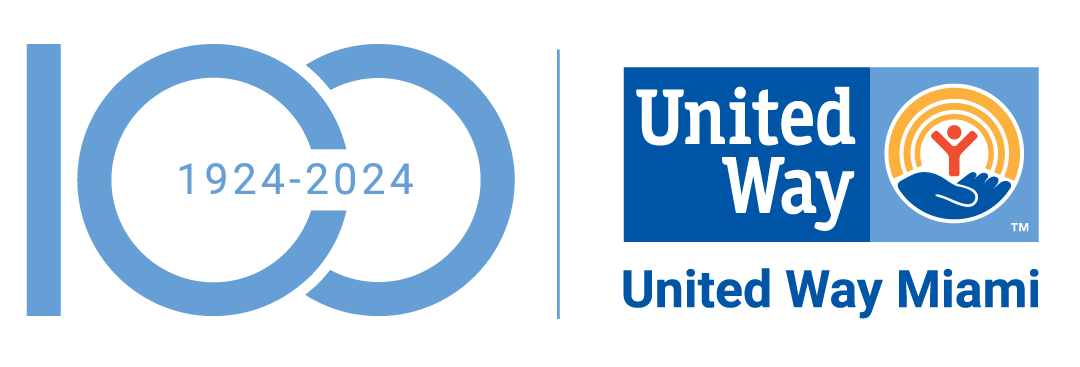National Report Reveals that Federal Poverty Data Undercounts How Many Children are Growing Up Amid Insecurity
New research shows that nearly 63 percent of all children in Miami-Dade County lived in financial hardship pre-pandemic
MIAMI (June 7, 2022) – The majority of Miami-Dade County’s children – nearly 63 percent lived in households that couldn’t afford the basics in 2019, according to a new report from United Way Miami and its research partner, United for ALICE. Statewide, children fare slightly better at 56 percent, although Florida is tied for second place with New Mexico and California in having the highest percentage of children living in households struggling to make ends meet – next to Georgia and Louisiana with the highest at 57 percent. The report can be accessed at UnitedforALICE.org/Focus-Children.
The ALICE in Focus: Children’s report reveals the disproportionate impact of financial hardship on the county’s children, while also challenging the reliance on federal poverty guidelines for eligibility for assistance programs. The report finds traditional measures of poverty have severely undercounted the number of children of all races ages 18 and younger in Miami-Dade County who are growing up in financially insecure households.
While 19.6 percent of all children in the county were deemed to be living in poverty in 2019, the report shows nearly 43 percent – more than twice as many – lived in families defined as ALICE (Asset Limited, Income Constrained, Employed). ALICE households earn more than the Federal Poverty Level, but less than what it costs to live and work in the modern economy. ALICE families work, yet have little or no savings and are one emergency away from falling into poverty. Combined, nearly 63 percent of Miami-Dade County’s children lived in households below the ALICE Threshold, with income that doesn’t meet the basic costs of housing, childcare, health care, transportation and a smartphone plan.
“Undercounting the number of children who are at risk can have lifelong consequences,” says Mary Donworth, Chief Program Officer at United Way Miami. “Thousands of children are locked out of receiving critical support for stable housing, food, and quality education, all of which can inhibit healthy child development. This report reveals the many factors our ALICE population is struggling with and helps determine how we create or invest in local solutions – this is why having accurate, complete data is so important.”
Children below the ALICE threshold often lack access to resources because they earn just above the Federal Poverty Level. The report finds that more than 207,000 children in Miami-Dade County did not access the Supplemental Nutrition Assistance Program or SNAP – almost 1.5 million in Florida.
“The fact that even before the pandemic we had such high numbers of children and families who were struggling is a strong indicator of the challenges our community is facing and the needs that went unmet,” says Dr. Maria D. Ilcheva, Assistant Director of Planning and Operations at FIU’s Metropolitan Center. “The pandemic has only magnified these challenges. Now in 2022, with rising housing costs, record-high inflation and a childcare system that is struggling, ALICE families and those below the ALICE threshold are even more constrained and in need of support through education, social services and childcare,” continued Ilcheva.
Other findings from ALICE in Focus: Children include:
- Having two working parents did not guarantee financial stability: Among households with two working adults, 46 percent of Miami’s children were living in families whose income did not meet the cost of basic needs in 2019 – before the pandemic and increased housing costs.
- 78 percent of families that rent in Miami-Dade County lived in ALICE households compared to 47 percent of families that own their homes. Meaning that Children in Miami households that rent were more likely to be ALICE vs. children in families who own. Recently, Miami-Dade County has been reported as the most expensive place to live in America.
- Over 133,000 children in households earning below the ALICE Threshold had no high-speed internet access at home.
“Miami-Dade County families have been facing a number of challenges that today are compounded by inflation and other rising costs, and new data shows that almost 33 percent of children in the U.S. are living in ALICE households,” said The Children’s Trust President & CEO James R Haj. “Information and data like this is key to guiding the Trust to continue to make thoughtful and strategic decisions to provide families with the support they need through all of our initiatives, including our Family and Neighborhood Support Partnerships.”
United Way’s ALICE reports provide data to back up what families in Miami experience every day and is used nationwide to validate programs and advocacy in support of working families. Other organizations in Miami that utilize data from ALICE reports include FIU’s Metropolitan Center, The Children’s Trust, The Greater Miami Chamber of Commerce, YWCA, Miami Matters, etc.
More data is available through the ALICE in Focus: Children interactive data dashboard – which provides filters for regional and local geographies, age, race, disability status, living arrangements and household work status. Visit UnitedforALICE.org/Focus-Children.
ALICE in Focus: Children is the first installment in the ALICE in Focus Research Series, which draws from the U.S. Census Bureau’s American Community Survey (ACS) Public Use Microdata Samples (PUMS). Each installment in the series will highlight a specific segment within the ALICE demographic. Upcoming topics include people with disabilities and veterans.
About United For ALICE
United For ALICE is a driver of innovation, research and action to improve life across the country for ALICE (Asset Limited, Income Constrained, Employed) and for all. Through the development of the ALICE measurements, a comprehensive, unbiased picture of financial hardship has emerged. Harnessing this data and research on the mismatch between low-paying jobs and the cost of survival, ALICE partners convene, advocate and collaborate on solutions that promote financial stability at local, state and national levels. This grassroots ALICE movement, led by United Way of Northern New Jersey, has spread to 24 states and includes United Ways, corporations, nonprofits and foundations in Arkansas, Connecticut, Delaware, Florida, Hawai‘i, Idaho, Illinois, Indiana, Iowa, Louisiana, Maryland, Michigan, Mississippi, New Jersey, New York, Ohio, Oregon, Pennsylvania, Tennessee, Texas, Virginia, Washington, Washington, D.C., West Virginia and Wisconsin; we are United For ALICE. For more information, visit: UnitedForALICE.org.



